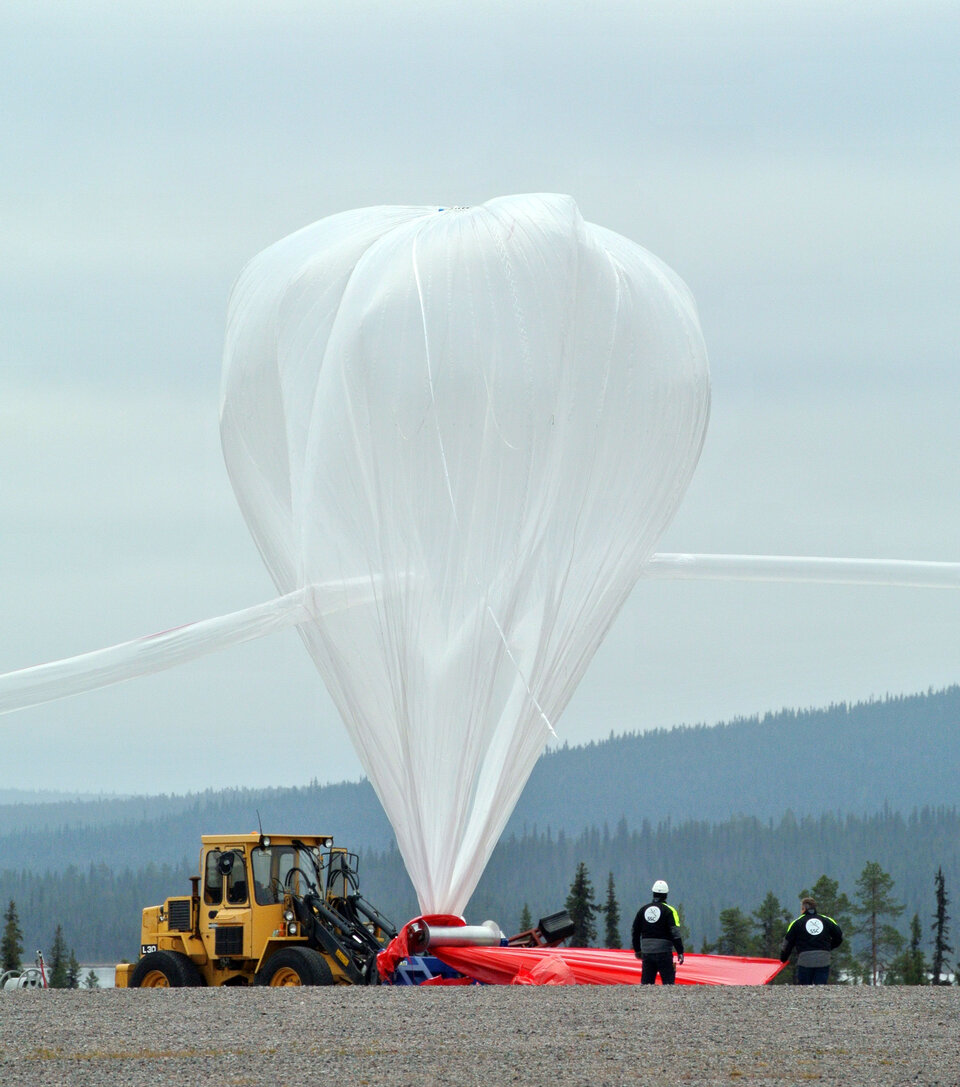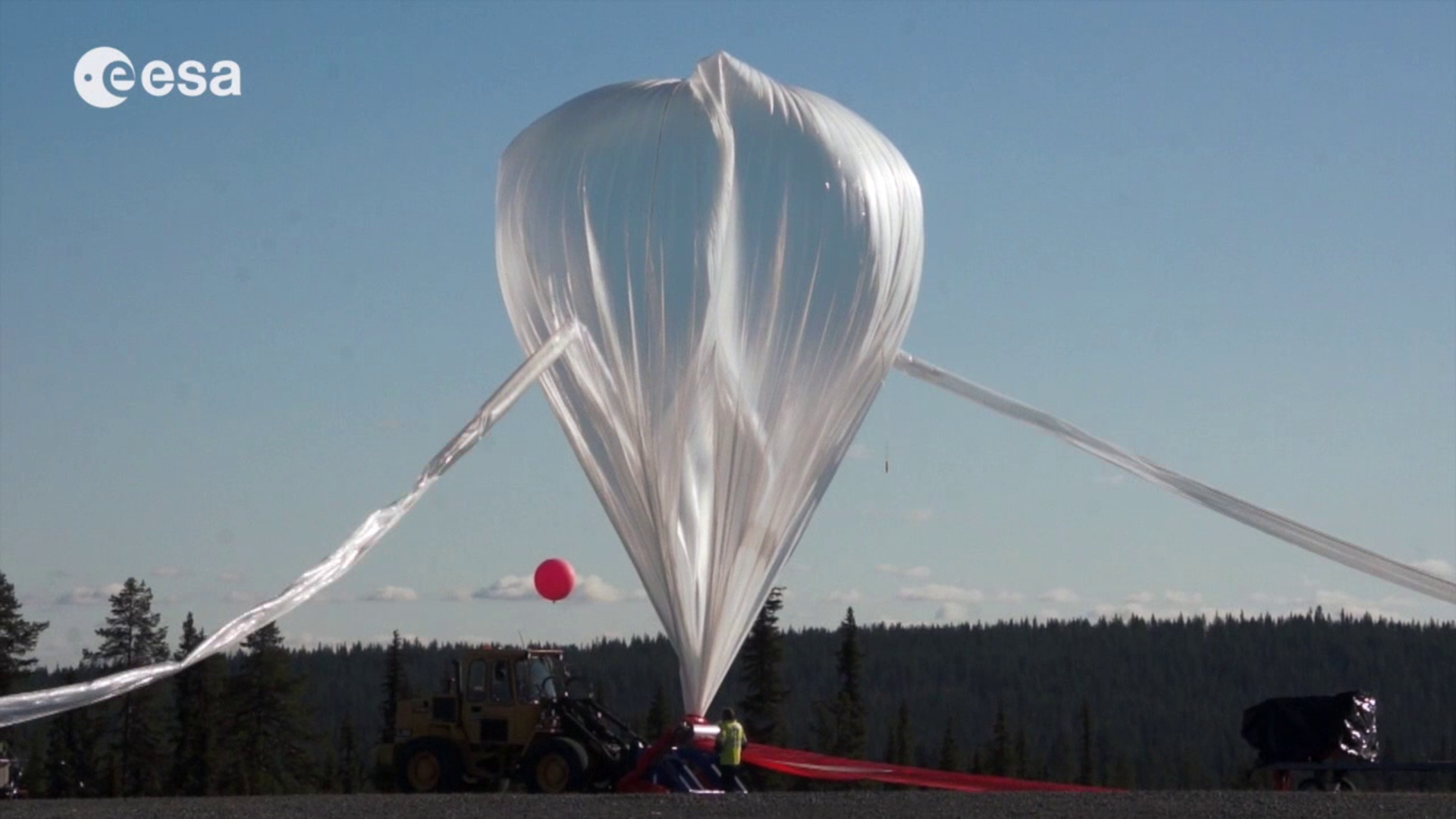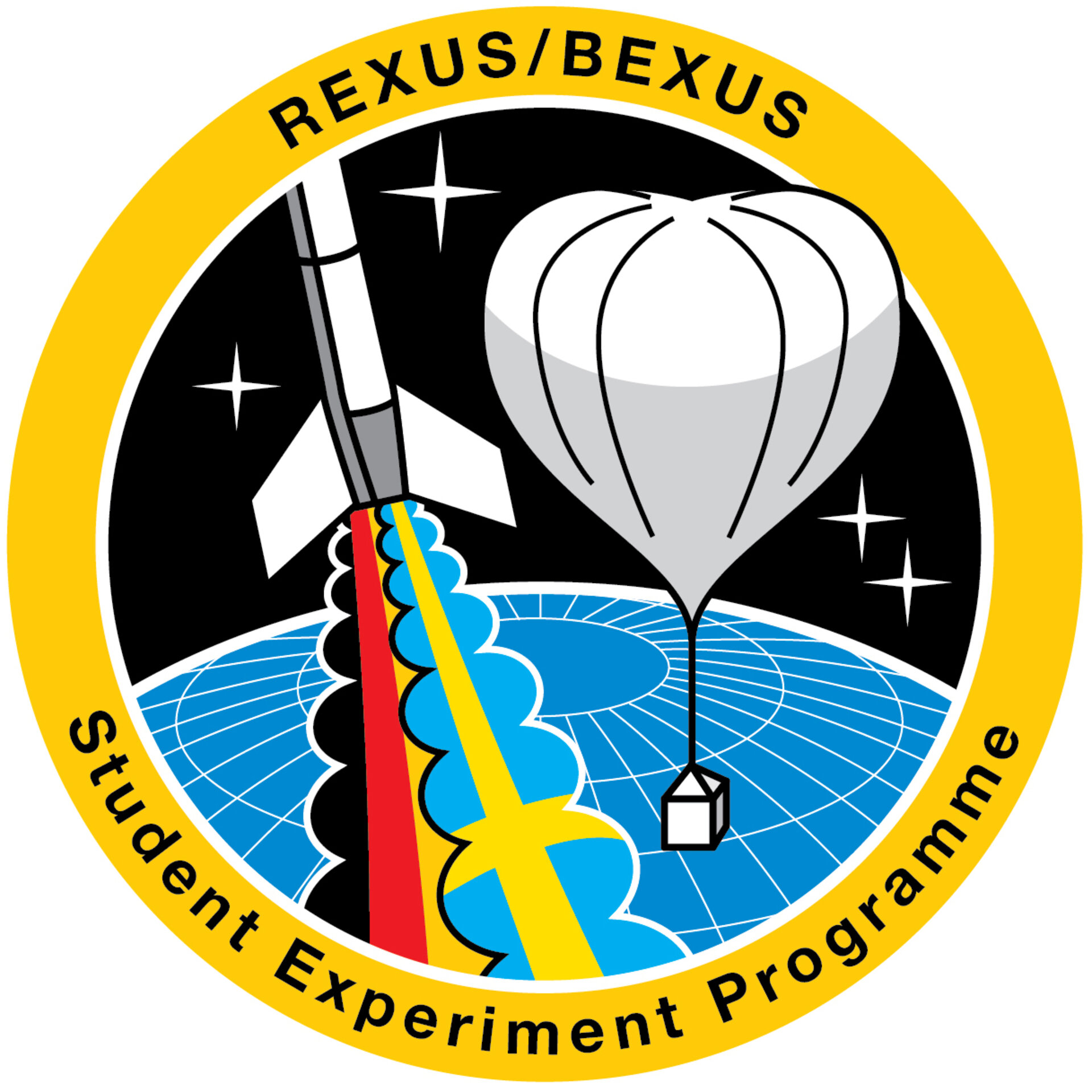Applications open: student experiments wanted for high-altitude science
The ESA Education office in collaboration with The Swedish National Space Board (SNSB) and the German Space Agency (DLR) are offering university students the exciting chance to send their experiments into the stratosphere or mesosphere.
BEXUS (Balloon Experiment for University Students) and REXUS (Rocket Experiment for University Students), are fantastic opportunities for ambitious students. Applications are now open, and will close on 16 October 2017.
- BEXUS will use a stratospheric balloon with a float altitude of 20-30km for 2-5 hours. It is designed to carry a payload from 40-100kg. Launch is scheduled for October 2018.
- REXUS will use a sounding rocket with an apogee of 75-90km (mesosphere region) with up to two minutes of reduced gravity. It can carry a 40kg payload. Launch is scheduled for March 2019.

Each programme will feature not one, but two launches from the SSC’s Esrange Space Centre located near Kiruna, Northern Sweden. Approximately 150km north of the Arctic Circle, in summer the Sun never sets and in winter the Aurora Borealis lights up the skies.
Selected teams will experience a full space project lifecycle from start to finish, including technical reviews, a launch campaign, and operations and data analysis. Teams may also have the opportunity to present their results at a professional conference following their flight.
In order to apply to one of the programmes an experiment proposal must be prepared and sent to ESA before 16 October 2017. German students should apply via the parallel call for proposals from DLR. Up to 15 teams judged to have submitted the best proposals will be invited to attend a selection workshop at ESA-ESTEC in the Netherlands from 28-30 November 2017. Teams must consist of students enrolled in universities from ESA member states or cooperating states. Students will present their project and justify to a panel of experts why their experiment should fly on one of the rockets or balloons.
For the experiment to be selected it has to show scientific or technology value, a high likelihood of success, educational value, and be able to justify the need for a stratospheric balloon or a sounding rocket flight. Past experiments have featured areas of investigation ranging from atmospheric measurements to microgravity investigations, technology demonstrators for future space missions, and even biology.
Successful teams will receive a “flight ticket” that grants their experiment a place on the required vehicle. Around 10 teams are selected each year from the SNSB/ESA applications, with a similar number of German teams selected by DLR.
In order to launch their experiments the selected teams will first have to pass several stages:
- Preliminary Design Review (PDR), which takes place in conjunction with a training week at SSC’s Esrange Space Centre in Northern Sweden.
- Critical Design Review (CDR) at ESA-ESTEC for BEXUS teams, and DLR-Oberpfaffenhofen for REXUS teams.
- Integration Progress Review (IPR) at the team’s university.
- Experiment Acceptance Review (EAR) also at the team’s university.
- Testing Phase, including an integration week at ZARM’s facility in Bremen and bench test in DLR Oberpfaffenhofen (both for REXUS only).
- Flight Readiness Review (FRR) at Esrange Space Centre before launch.
This is the 11th cycle of the BEXUS/REXUS Programme, which to date has involved over 1200 students from 21 ESA Member and Cooperating States. This call for applicants coincides with the 10th anniversary of the programme, which is being celebrated during ESA’s 23rd PAC Symposium currently taking place in Visby, Sweden.
More information, including videos, former teams’ documents, and designs and project ideas can be found at:
www.rexusbexus.net
www.esa.int/Education/Rocket_Balloon_Experiments_for_University_Students
The REXUS/BEXUS programme is realised under a bilateral Agency Agreement between the German Aerospace Center (DLR) and the Swedish National Space Board (SNSB). Through the collaboration with the European Space Agency (ESA), the Swedish share has been made available to students from all ESA Member or Cooperating States.
EuroLaunch, the cooperation between the Esrange Space Center of SSC and the Mobile Rocket Base (MORABA) of DLR, is responsible for the campaign management and operations of the launch vehicles. Experts from DLR, SSC, ZARM, and ESA provide technical and logistic support to the student teams throughout the project.


Access the video


